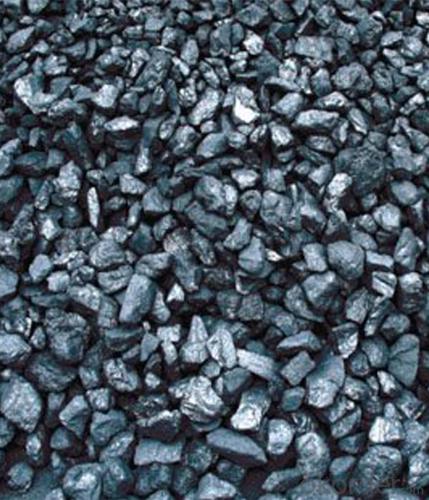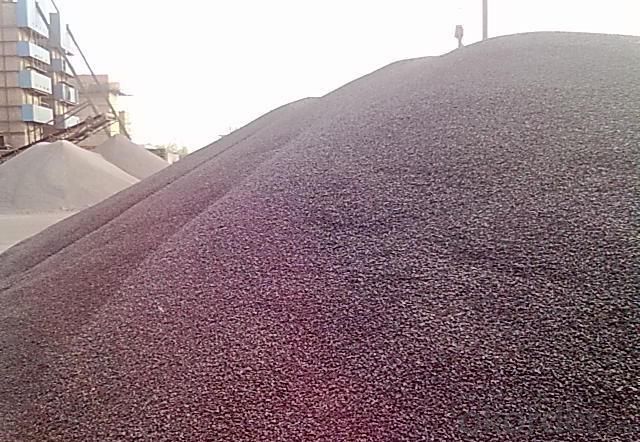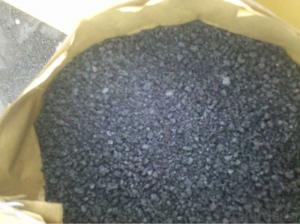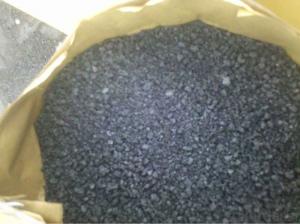FC95 Gas Calcined Anthracite CNBM China
- Loading Port:
- Tianjin
- Payment Terms:
- TT OR LC
- Min Order Qty:
- 0 m.t.
- Supply Capability:
- 100000 m.t./month
OKorder Service Pledge
OKorder Financial Service
You Might Also Like
Feature
All of our goods are made in the best quality of world famous Tianjin. All of our products are with High carbon, Low ash, low sulphur, Low Moisture.
Packaging & Delivery
Packaging Detail: | 25kgs/50kgs/1ton per bag or as buyer's request |
Delivery Detail: | Within 20 days after receiving corect L/C |
Usage
The Calcined Anthracite Coal/Gas Calcined Anthracite Coal/Carbon Raiser is mainly used in steelmaking in electrical stove, screening water, shipbuilding sandblast to remove rust. It can reduce the cost of steelmaking effectively by replacing the traditional petroleum coke of carburant.Also can improve the Carbon content in steel-melting and Ductile iron foundry.
Specifications
Calcined Anthracite
Fixed carbon: 90%-95%
S: 0.5% max
Size: 0-3. 3-5.3-15 or as request
PARAMETER UNIT GUARANTEE VALUE | |||||
F.C.% | 95MIN | 94MIN | 93MIN | 92MIN | 90MIN |
ASH % | 4MAX | 5MAX | 6MAX | 7MAX | 8MAX |
V.M.% | 1 MAX | 1MAX | 1.5MAX | 1.5MAX | 1.5MAX |
SULFUR % | 0.5MAX | 0.5MAX | 0.5MAX | 0.5MAX | 0.5MAX |
MOISTURE % | 0.5MAX | 0.5MAX | 0.5MAX | 0.5MAX | 0.5MAX |
Size can be adjusted based on buyer's request.
Picture

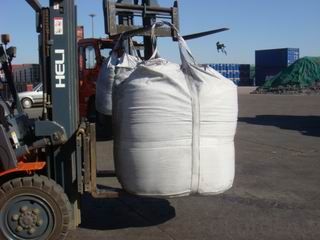
- Q: Method for making carbon fiber board
- Method for making carbon fiber sheet:1, first determine the thickness of the plate to be made2 calculate the required number of plies according to the thickness3, and then according to 0 degrees, 45 degrees, 90 degrees, -45 degrees in the order of stacking.4, and then molding it!Now carbon fiber board, in fact, many in the middle are entrained with some glass fiber cloth, of course, there are all carbon, a little more expensive!
- Q: Appearance, hardness, electrical conductivity, use of carbon 60
- For gas storageThe unique molecular structure of C60, C60 can be used as more effective and new hydrogen absorbing material than metal and alloy. There are 30 carbon carbon double bonds, each molecule of C60 so that the C60 molecules in the double bond open can absorb hydrogen. Stable C60 hydride has known C60 C60H24, C60H36 and C60H48. in the control of temperature and pressure conditions, can be simply made by C60 C60 and hydrogen hydrides, it at room temperature is very stable, and in the 80 to 215 DEG C, C60 hydride will release hydrogen, leaving the pure C60, it can be 100% recovery, and was used to prepare C60 hydride. Compared with the hydrogen storage materials of metal or its alloys, C60 hydrogen storage has the advantages of low price, and lighter than C60, metals and alloys, therefore, the same quality of material, the hydrogen storage of C60 metal or its alloy than more.C60 not only can store hydrogen, can also be used to store oxygen. Compared with high-pressure cylinders of oxygen storage, high pressure cylinder pressure is 3.9 * 106Pa, belongs to the high pressure oxygen storage method, and storage of C60 oxygen pressure is only 2.3 * 105 Pa, which belongs to low pressure oxygen storage method. Using C60 under low pressure, large storage has many uses of oxygen in the medical departments, military departments and the business sector will be.
- Q: What is the carbon content of different types of household waste?
- The carbon content of various household waste types can differ based on the specific materials being disposed of. Generally, organic waste, including food scraps, yard waste, and paper products, tends to have higher carbon content when compared to inorganic waste like glass, plastics, and metals. Food waste consists mainly of organic materials and possesses a significant carbon content, typically ranging from 50 to 70 percent. This is because food originates from plants and animals, which contain carbon-rich carbohydrates, proteins, and fats. Yard waste, such as grass clippings, leaves, and branches, also contains a substantial amount of carbon. It is composed of plant matter predominantly made up of carbon-based compounds like cellulose and lignin. The carbon content of yard waste can vary depending on the vegetation type, but it generally falls between 40 to 60 percent. Paper products, such as newspapers, cardboard, and office paper, are primarily manufactured from wood pulp. Wood consists of carbon-containing compounds like cellulose, hemicellulose, and lignin. Consequently, paper waste possesses a notable carbon content, typically ranging from 40 to 60 percent. On the other hand, inorganic waste materials like glass, plastics, and metals have minimal carbon content. These materials are mainly derived from non-renewable resources such as minerals and fossil fuels, which have low carbon content. As a result, their carbon content is negligible or close to zero. It is crucial to acknowledge that while organic waste contains higher carbon content, it also holds the potential for composting or conversion into biogas through anaerobic digestion, thereby contributing to carbon sequestration or renewable energy generation. In contrast, inorganic waste materials like plastics and metals are non-biodegradable and can have harmful environmental consequences if not managed properly.
- Q: How does carbon affect food production?
- Carbon affects food production in several ways. Firstly, carbon dioxide is a crucial component for photosynthesis, the process by which plants convert sunlight into energy. Increased levels of atmospheric carbon dioxide can potentially enhance crop yields by providing plants with more raw materials for growth. However, excessive carbon emissions are also responsible for climate change, leading to extreme weather events such as droughts, floods, and heatwaves, which can negatively impact food production. Additionally, the burning of fossil fuels releases carbon dioxide, contributing to air pollution that can harm crops and reduce their productivity. Therefore, while carbon is essential for plant growth, the excessive release of carbon emissions can have detrimental effects on food production.
- Q: What is a carbon free martensite?
- Common martensite in iron based alloys, the essence of carbon and alloy elements (or) in alpha iron in the supersaturated solid solution. The iron carbon alloy is two yuan, carbon in alpha iron in the supersaturated solid solution.
- Q: What is the role of carbon in photosynthesis?
- The role of carbon in photosynthesis is to serve as the building block for glucose, the main energy source for plants. Carbon dioxide (CO2) is captured during photosynthesis and converted into glucose through a series of chemical reactions. This process, known as carbon fixation, is essential for plants to produce food and release oxygen into the atmosphere.
- Q: What is carbon neutral agriculture?
- Carbon neutral agriculture refers to a farming practice that aims to balance the amount of carbon released into the atmosphere with the amount of carbon sequestered or removed from the atmosphere. It involves adopting sustainable and environmentally friendly practices that minimize greenhouse gas emissions and promote the absorption of carbon dioxide from the atmosphere. There are several key practices involved in achieving carbon neutrality in agriculture. One of them is reducing fossil fuel usage by employing renewable energy sources, such as solar or wind power, for farm operations. This helps to decrease emissions associated with machinery, equipment, and transportation. Another important aspect is managing soil health and enhancing carbon sequestration. This can be achieved through practices like cover cropping, crop rotation, and conservation tillage. These methods help to increase organic matter in the soil, which in turn contributes to carbon storage. Additionally, carbon neutral agriculture encourages the use of organic fertilizers and natural pest control methods, reducing the need for synthetic chemicals that can emit harmful greenhouse gases. Offsetting carbon emissions is another strategy employed in carbon neutral agriculture. This can involve planting trees on the farm or in nearby areas to absorb carbon dioxide from the atmosphere. It can also include participating in carbon credit programs, where farmers receive compensation for implementing sustainable practices that reduce emissions. Overall, carbon neutral agriculture is a holistic approach that aims to minimize the carbon footprint of farming operations. By reducing emissions and maximizing carbon sequestration, it helps to mitigate climate change and promote a more sustainable agricultural system.
- Q: Material characteristics of carbon fiber
- This allows carbon fibers to have the highest specific strength and specific modulus in all high-performance fibers. Compared with the metal materials such as titanium, steel and aluminium, carbon fiber has the characteristics of high strength, high modulus, low density and low coefficient of linear expansion. It can be called the "king of new materials". In addition to carbon fiber with general characteristics of carbon material, its appearance has obvious anisotropy and soft, can be processed into a variety of fabrics, and the proportion of small, along the fiber axis show a very high strength carbon fiber reinforced epoxy resin composites, the strength and modulus of composite indicator in the existing structural materials is the highest. The tensile strength of carbon fiber resin composite materials are generally in more than 3500 MPa, is 7 to 9 times that of steel, the tensile modulus of 230 to 430G were also higher than that of steel; therefore the specific strength of CFRP material intensity and density can be achieved above 2000 MPa, the specific strength of A3 steel is only 59 MPa.
- Q: What is carbon nanotube?
- Carbon nanotubes, which are made up of carbon atoms arranged in a hexagonal lattice pattern, are cylindrical structures. Their size is incredibly small, measuring in the nanometer scale, and their length can vary from a few nanometers to several centimeters. The remarkable properties of carbon nanotubes make them highly desirable for a wide range of applications. They possess exceptional strength, surpassing that of any other known material, which makes them perfect for use in structural composites. Additionally, they exhibit excellent electrical conductivity, thermal conductivity, and chemical stability, making them valuable in fields like electronics, energy storage, and catalysis. There are two primary types of carbon nanotubes: single-walled nanotubes (SWNTs) and multi-walled nanotubes (MWNTs). Single-walled nanotubes consist of a single layer of carbon atoms rolled into a tube, while multi-walled nanotubes consist of multiple concentric layers of carbon atoms. The arrangement of carbon atoms and the tube's diameter determine the nanotube's properties. Due to their unique properties, carbon nanotubes have the potential to revolutionize various industries. Researchers are exploring their use in electronics as high-performance transistors, interconnects, and sensors. They also hold promise in energy storage, enabling batteries and supercapacitors with higher energy densities and faster charging rates. Furthermore, their large surface area and distinctive chemical properties make them suitable for catalytic applications, such as water purification and chemical synthesis. Despite the immense potential, challenges remain in the large-scale production and commercialization of carbon nanotubes. However, ongoing research and development efforts continue to expand their applications, making carbon nanotubes an exciting field of study with significant future possibilities.
- Q: The same manufacturer of different types of badminton rackets on the logo, but the two materials in the end what is the difference?
- There are two main components of a racket. One is carbon fiber, and the other is resin. From this point of view, there is no difference.The difference between rigidity and elasticity lies in the difference in resin and the way in which fibers are arranged when carbon fibers are added
Send your message to us
FC95 Gas Calcined Anthracite CNBM China
- Loading Port:
- Tianjin
- Payment Terms:
- TT OR LC
- Min Order Qty:
- 0 m.t.
- Supply Capability:
- 100000 m.t./month
OKorder Service Pledge
OKorder Financial Service
Similar products
Hot products
Hot Searches



